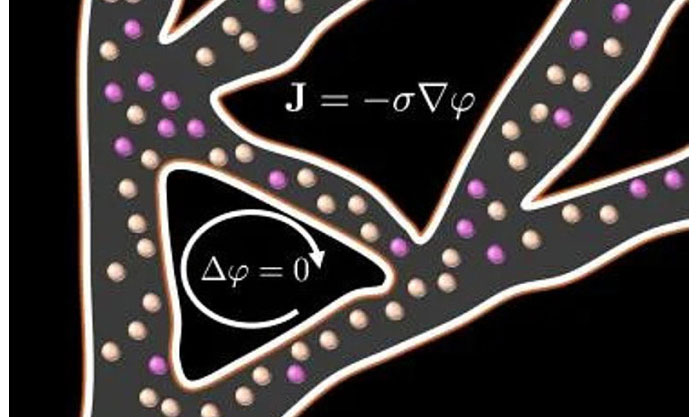Discover how you can charge your phone battery in 60 seconds
Specifically, scientists have found a way to separate small charged particles (ions), which can move more efficiently in a network of small pores, opening up the development of ultra-fast energy storage devices. .
In an announcement on the University of Colorado's website, the new discovery could potentially lead to advances that fully charge a laptop or phone in one minute, or fully power an electric car in 10 minutes.
 Discover how you can charge your phone battery in 60 seconds Picture 1
Discover how you can charge your phone battery in 60 seconds Picture 1
After considering the movement of ions through a complex network of interconnected pores running through the supercapacitor. The research team discovered that ions have different movements at the hole intersection of the complex network running through the supercapacitor. From here, the team created a complex network model of thousands of interconnected nanopores for tracking. The results they received were different from Kirchhoff's law - a law that has existed since 1845 about the rules governing current in circuits.
Gupta said the research results could be applied in supercapacitors - energy storage devices based on ion accumulation and with faster charging times than traditional batteries. The research also opens up application directions in energy storage for smart devices, electric vehicles and grid power.
According to BGR, the above results just stop at the research stage, putting them into practice still has many challenges. In addition, Kirchhoff's law still shows the correctness in the operation of common electrical circuits. Research results cannot change this law.
However, these scientists also expressed optimism about the ability to apply new research into practice.
You should read it
- Huawei's fast charging technology surpasses Apple and Samsung
- Xiaomi developed new fast charging technology, fully charging 4,000mAh battery in just 17 minutes
- How to charge the phone battery faster during travel
- Only this smartphone entered the list of Qualcomm support Quick Charge 4.0
- Fast charging applications on the phone
- We have been charging the wrong way for a long time
- Guide to quickly charge your phone with Fast Charger
- How to fast charge iPhone 11
- Device to charge the phone with water and wind for phượt people
- Vivo introduced fast charging technology that can fully charge a 4.000mAh battery in 13 minutes
- Qualcomm announced Quick Charge 3+ for USB Type-A, which makes phones charge much faster
- Revealing the secret to charging your iPhone battery super fast
May be interested

China develops the world's fastest vision chip, 10,000 frames per second

Exchanging fake iPhones for real iPhones for 10 consecutive years caused Apple to lose 12 million USD

10 keywords you should not search on Google

What to do when you cannot install Netop School on Win 10 +11?
![Photo of [BUG FIX] The computer lost the Show Desktop button on the Taskbar](https://tipsmake.com/img/no-image-200-120.png)
[BUG FIX] The computer lost the Show Desktop button on the Taskbar

Excel is upside down on Macbook, effective way to fix it




![Photo of [BUG FIX] The computer lost the Show Desktop button on the Taskbar](https://tipsmake.com/data8/thumbs/[bug-fix]-the-computer-lost-the-show-desktop-button-on-the-taskbar-thumb-mZedEUWwL.jpg)

 We have been charging the wrong way for a long time
We have been charging the wrong way for a long time Instructions on how to charge the battery to best protect the phone battery
Instructions on how to charge the battery to best protect the phone battery How to charge phone with battery
How to charge phone with battery How to charge the phone battery faster during travel
How to charge the phone battery faster during travel Is it okay to charge the backup battery while using the phone?
Is it okay to charge the backup battery while using the phone? Advantages and disadvantages of charging the phone battery with a laptop?
Advantages and disadvantages of charging the phone battery with a laptop?